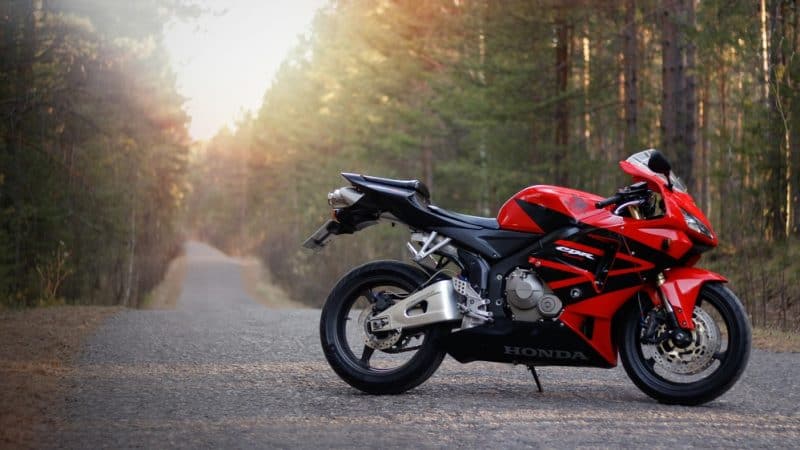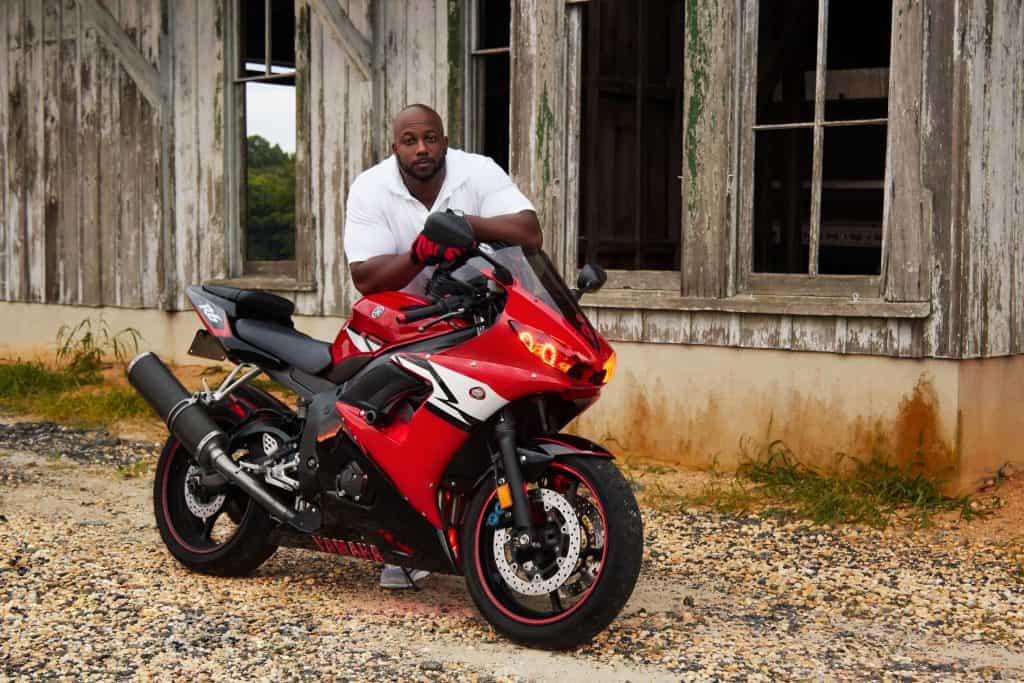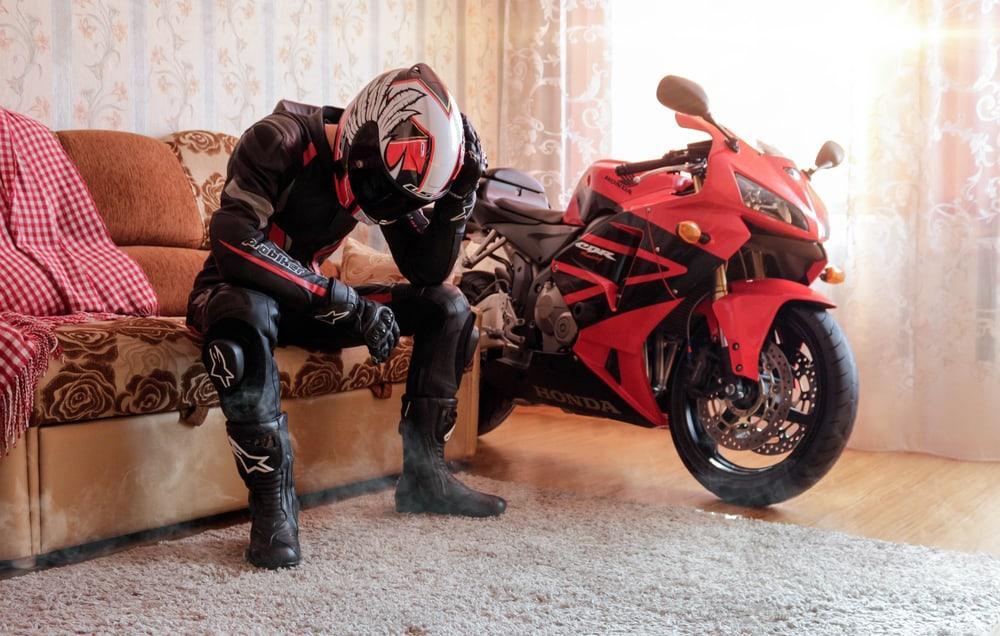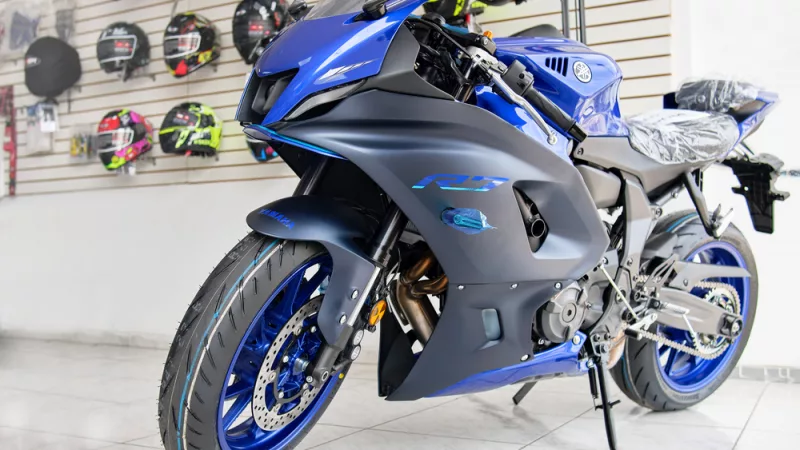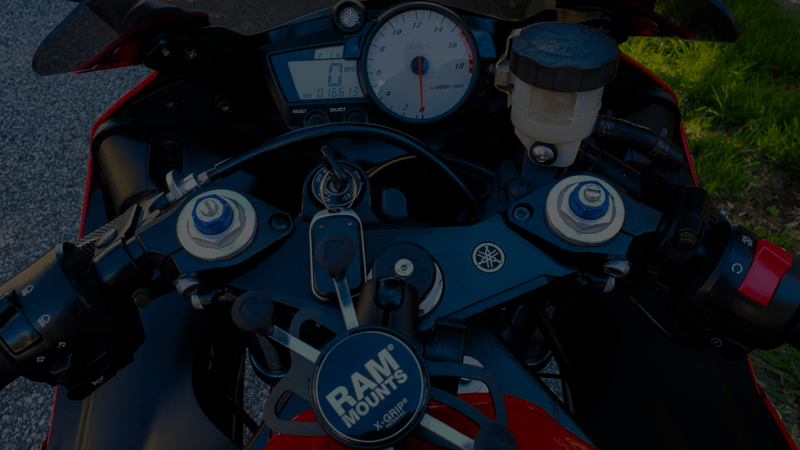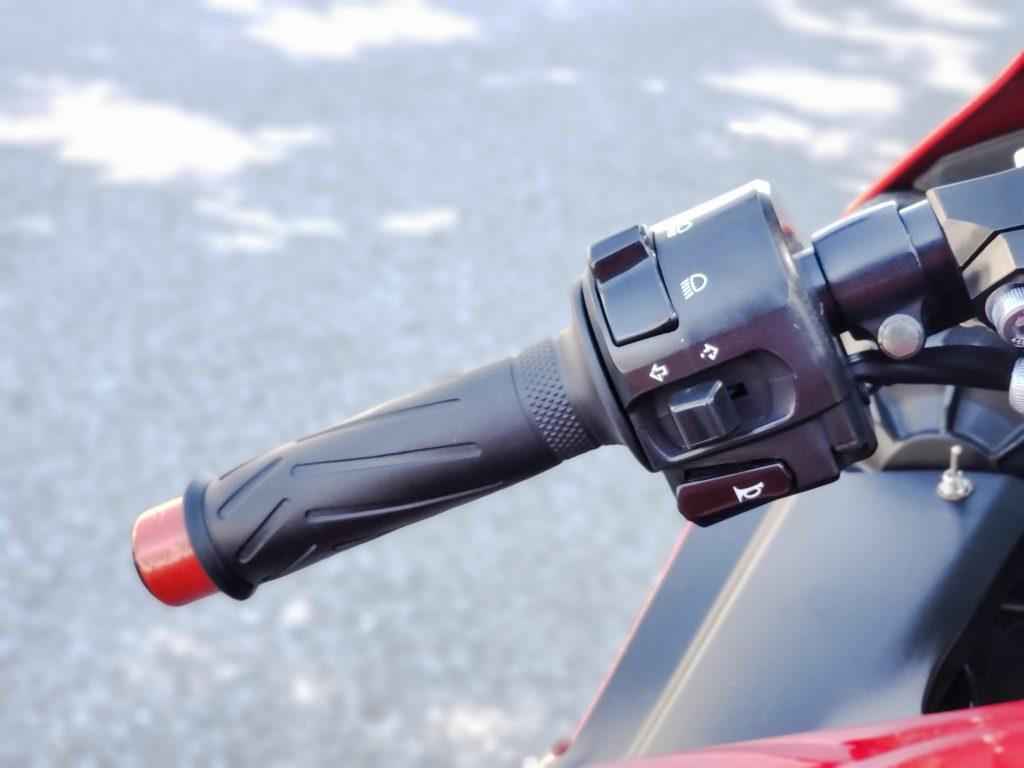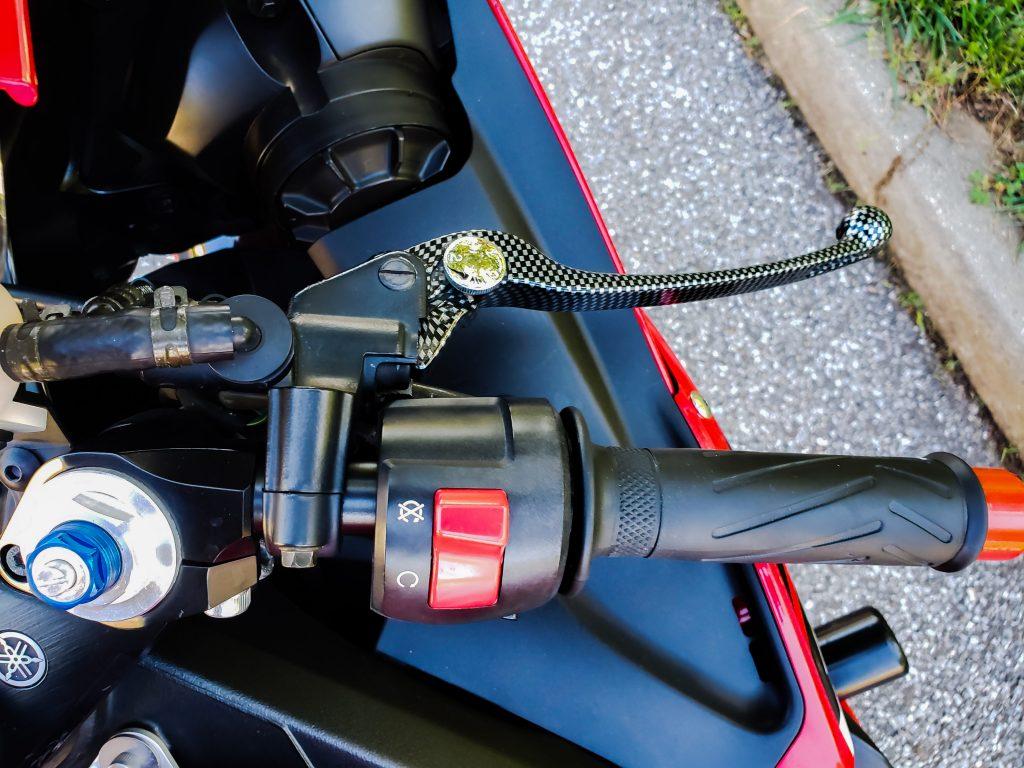The motorcycle jacket is one of the most iconic artifacts of biker culture, especially in public consciousness. When people picture a motorcyclist, they tend to envision someone clad in a well-made, well-fitted leather jacket.
With the continuous advancement of material sciences, the constant diversification of motorcycles themselves, and the rather varied climates of a global society, there are a plethora of jackets to choose from.
You’re bound to find the jacket that’s ideal for you, but there are a few variables to consider, such as what you find comfortable, the climates you’ll be riding in, and the type of motorcycle you’re going to use.
No products found.
The Four Motorcycle Jacket Styles
There are basically for style groups, when it comes to these jackets – Cruiser, Racing, Sport/Street and Adventure Touring/Dual Sport. Each of these has its own strengths, making them ideal for a specific riding style. Surprisingly, no single type of material/textile is standard for any given style of jacket either.
- Cruiser – This is the classic motorcycle jacket that most picture – the icon, the stereotype. While most commonly seen in leather, they’re also available in many other styles, with a focus on comfort and aesthetic. These are ideal for casual riders and those that use their motorcycle as transportation going about their daily lives.
- Racing – Racing jackets are distinctive for their tight fit and somewhat “space age” appearance. The tight fit is to prevent wind resistance, and the distinct appearance is due to flex panels designed to allow mobility while providing padding against abrasions from dangerous high-speed offs. They tend to have a narrower collar, and a zipper to fasten to racing pants (preventing ride up).
- Sport/Street – These jackets are a casual modification of racing jackets, taking the slower speeds into account. They’re distinguished by the less prominent flex panels and the looser fit focusing on comfort. Seasonal jackets of this sort also include insulation and ventilation to help keep the rider cool or warm in harsh conditions.
- Adventure/Dual Sport – This is a less common style of jacket, used primarily by those whom go on long rides across varied, often rough climates and terrains. They look like nothing more than a survival jacket imitating a racing jacket, with pockets for gear, layers of insulation and impact padding, and a form-hugging design with an additional fastening around the neck. These are ideal for winter riding, or those long trans-continental adventures.
No products found.
Important Motorcycle Jacket Factors To Consider
There are important factors to consider, which will determine the material you choose, and the style of jacket most suited to your needs.
- Leather or Textile – The first decision you’ll want to make is if you want leather or textile. Leather has a classic look, and many regard it as quite comfortable. However, its real strength is in its resistance to abrasion. However, for comfort and versatility in multiple climates and weather conditions, textiles tend to outperform it. This all comes down to whether you want comfort in various climates, or wish to focus on the durability of leather.
- Visibility/Reflectivity – While many would argue that subtlety is a sign of good everyday design, a jacket that catches the eye can actually be a major boon to safety. You want people to see you, and be aware of your presence and location on the road!
- Liners and Armor/Padding – If you ride in a temperate area with both hot and cold weather, you may want to look for a jacket with removable or all-weather lining that can help keep you warm in the winter, without the jacket cooking you in the summer. Similarly, even if you’re not a dare devil (and you shouldn’t be!), focusing on padding/armor around the chest, back and shoulders is also important, as these are areas where damage can be the worst if you have a nasty off.
- Fitment – Finally, you want a jacket that fits you well, and comfortably. It can be hard to find one that’s a perfect fit, but many styles of jacket have fitment adjustments on the waist and slides on the sleeves, which provide just the right amount of hug or slack for your personal comfort standards. You don’t want to wear a jacket that’s too tight or constrictive, cutting off circulation. The fatigue from this can lead to serious dangers.
To learn more about the different styles of jackets, which ones suit which styles of riding, and much more about the adventurous world of motorbiking, subscribe to my YouTube channel today!
No products found.
You Might also like
-
The Benefits of Owning a Sportbike: A Comprehensive Guide
Riding a sportbike is a unique and thrilling experience that offers a variety of benefits for those who choose to make it a part of their lifestyle. From the rush of adrenaline to the sense of freedom and adventure, sportbikes offer riders a way to escape the mundane and experience life to the fullest. In this article, we will delve into the many benefits of owning a sportbike, from the physical and mental benefits to the practical and financial advantages.
Sportbikes are a type of motorcycle designed for speed and agility, offering a thrilling and unique riding experience that is unmatched by any other type of vehicle. From the roar of the engine to the wind in your face, sportbike riding provides a sense of excitement and adventure that is hard to replicate. Whether you are a seasoned rider or a newcomer to the sport, the benefits of owning a sportbike are numerous and far-reaching. In this article, we will explore the many benefits of sportbike ownership, from the physical and mental health benefits to the practical and financial advantages.
Sportbike riding is more than just transportation – it is a way of life. It provides a sense of freedom and escape from the daily grind, allowing you to explore new roads and destinations and experience life to the fullest. For many riders, owning a sportbike is not just about having a fast and stylish vehicle, but about being part of a community and experiencing a sense of camaraderie with other riders.
Whether you are looking to improve your physical and mental health, save money on your daily commute, or simply experience the thrill of the open road, sportbike ownership has something to offer everyone. So why not join the ranks of sportbike riders today and discover the many benefits of this exciting and rewarding hobby?
Physical and Mental Benefits
- Improved Physical Fitness: Riding a sportbike requires a certain level of physical fitness, as well as coordination and balance. Over time, this type of riding can help improve your overall fitness, increase your energy levels, and even lead to weight loss. The physical demands of sportbike riding can also help reduce stress levels and improve flexibility and dexterity.
- Improved Mental Health: Sportbike riding has numerous mental health benefits, including reducing anxiety and depression, improving cognitive function and concentration, and providing a sense of calm and clarity. The rush of adrenaline that comes with sportbike riding can also boost your mood and help you feel more alive. In addition, the sense of adventure and excitement that comes with sportbike riding can help improve your overall well-being and provide a much-needed escape from the daily grind.
- Sense of Freedom and Adventure: Owning a sportbike opens up a world of possibilities, from exploring new roads and destinations to simply enjoying the open road. The freedom and sense of adventure that comes with sportbike riding is unmatched and provides a much-needed escape from the daily grind. Whether you are riding solo or with a group of friends, the experience of riding a sportbike is both liberating and exhilarating.
- Improved Hand-Eye Coordination: Sportbike riding requires quick reflexes and precise hand-eye coordination, both of which can improve with regular riding. This can have a positive impact on other aspects of your life, from driving to sports and other physical activities.
- Stress Relief: The fast pace and excitement of sportbike riding can provide a much-needed escape from the daily stressors of life. Whether you are riding through the countryside or navigating through city traffic, sportbike riding can provide a sense of calm and relaxation that is hard to replicate.
Practical and Financial Benefits
- Cost-Effective Transportation: Sportbikes are often more cost-effective than traditional cars and can be an affordable way to get around. With high gas mileage and low maintenance costs, sportbikes can save you money on your daily commute or weekend adventures.
- Ease of Parking: Sportbikes are smaller and more maneuverable than traditional cars, making them easier to park in tight spaces. This can save time and hassle, especially in busy urban areas where parking can be a challenge.
- Reduced Commute Time: Sportbikes are faster and more agile than traditional cars, making them ideal for navigating through traffic and reducing your commute time. Whether you are commuting to work or simply running errands, a sportbike can get you where you need to be faster and more efficiently.
- Environmentally Friendly: Sportbikes are more environmentally friendly than traditional cars, producing fewer emissions and using less fuel. This can help reduce your carbon footprint and contribute to a healthier planet.
- Personalization Opportunities: Owning a sportbike provides an opportunity to personalize and customize your vehicle to suit your style and preferences. From choosing the right accessories to customizing the look of your bike, there are countless ways to make your sportbike truly your own.
Conclusion
Whether you are a seasoned rider or just starting out, the benefits of owning a sportbike are numerous and diverse. From the physical and mental health benefits to the practical and financial advantages, sportbike riding offers riders a unique and exciting way to experience life. Whether you are looking for adventure, freedom, or simply a way to improve your daily commute, a sportbike is the perfect vehicle to help you achieve your goals. So why not experience the thrill of the open road for yourself and see what owning a sportbike can do for you?
-
Why an Adjustable Motorcycle Kickstand is a Game-Changer for Riders
Motorcycles are more than just vehicles; they’re a passion, a lifestyle, and for many, an expression of personal freedom. However, every rider knows that the smallest details can make the biggest difference when it comes to convenience, safety, and enjoyment on the road. One such detail, often overlooked, is the motorcycle kickstand. Specifically, an adjustable motorcycle kickstand can transform your riding experience in ways you might not have considered. Let’s explore why upgrading to an adjustable kickstand for your motorcycle could be a game-changer.
Key Takeaways
- Adjustable Kickstands Enhance Stability: They can be modified for various terrains, ensuring your bike stays upright in different parking conditions.
- Ideal for Customized Bikes: Modifications that alter a bike’s height and balance make adjustable kickstands a necessity for maintaining stability.
- Improves Ergonomics: Adjustable kickstands can be tailored to individual rider needs, making it easier to handle the bike, especially for those with physical limitations.
- Complementary Accessories: Kickstand pads and plates further stabilize the motorcycle, especially on soft or uneven surfaces.
Comparison Table: Standard vs. Adjustable Motorcycle Kickstands
Feature Standard Kickstand Adjustable Kickstand Stability on Varied Terrain Limited Excellent Customization Not applicable High Ergonomics Standard Adjustable for ease Compatibility with Mods Low High Cost Generally lower Higher initial, but cost-effective long-term Enhanced Stability on Varied Terrain
The primary function of a kickstand is to provide stability when the motorcycle is parked. Standard, non-adjustable kickstands are designed with a one-size-fits-all approach, assuming a level parking surface. In reality, riders face a variety of parking surfaces—gravel, grass, slopes, and uneven roads. An adjustable kickstand allows for length modifications, ensuring your bike remains upright and stable, regardless of ground conditions. This adaptability is not just about convenience; it’s a safety feature that prevents your motorcycle from tipping over and sustaining damage.
Customization for Custom and Modified Bikes
Customization is at the heart of motorcycle culture. Riders spend considerable time and resources modifying their bikes to reflect their personal style and to improve performance. These modifications can alter the bike’s original balance and height, making the original kickstand less effective or even unusable. Custom kickstands for motorcycles offer a solution, but an adjustable kickstand provides a versatile and often more economical alternative, accommodating changes in bike height and balance without the need for multiple replacements.
Improved Ergonomics and Accessibility
For shorter riders or those with limited physical strength, maneuvering a motorcycle on its kickstand can sometimes be challenging. An adjustable kickstand can be set to a height that reduces the effort required to lift the bike off the stand. This improved ergonomics makes riding more accessible and enjoyable for everyone, ensuring that the focus remains on the joy of the ride, not the struggle of parking.
Motorcycle Kickstand Pads and Plates: The Perfect Companions
While an adjustable kickstand offers improved stability and customization, pairing it with a motorcycle kickstand pad or plate can enhance its functionality even further. Kickstand pads distribute the motorcycle’s weight over a larger area, making them ideal for soft ground where a stand might otherwise sink. Similarly, motorcycle kickstand plates offer a stable platform on uneven surfaces, preventing the stand from slipping. Together, these accessories complement the adjustable kickstand, providing a comprehensive solution to parking challenges.
FAQs: Adjustable Motorcycle Kickstands
-
What makes an adjustable kickstand better than a standard one?
- An adjustable kickstand can be altered in length to suit various terrains and bike modifications, offering superior stability and customization.
-
Can I install an adjustable kickstand on any motorcycle?
- Yes, most adjustable kickstands are designed to fit a wide range of motorcycles, but it’s essential to check compatibility with your specific model.
-
Will an adjustable kickstand affect my bike’s balance?
- It will improve balance by allowing adjustments to accommodate different ground levels and modifications that may affect your bike’s original balance.
-
How do I know if my adjustable kickstand is at the right height?
- The bike should sit at a stable angle without leaning too much to one side. Adjust the kickstand until you find a stable and secure position.
-
Are kickstand pads and plates necessary?
- While not strictly necessary, they are highly recommended for additional stability, especially on soft or uneven surfaces.
-
Can adjusting my kickstand void my motorcycle’s warranty?
- Generally, no. However, it’s best to consult your warranty terms or manufacturer to be sure.
Conclusion: A Simple Upgrade with Significant Benefits
An adjustable kickstand for motorcycles represents a simple upgrade with a profound impact on your riding experience. It offers enhanced stability, customization, and ergonomics, making it a wise investment for riders of all styles and preferences. When combined with kickstand pads and plates, it provides a foolproof solution to virtually any parking challenge. Whether you’re a casual rider or a motorcycle enthusiast, consider the adjustable kickstand as your next game-changing accessory. It’s a small detail that promises to make a big difference, ensuring your focus remains on the freedom and joy of riding.
-
Motorcycle Basics: Before You Start Riding
Before even hopping on a motorcycle, it’s a smart decision to ride about the mechanics of the machine and familiarize yourself with key concepts. Having an idea in your head is going to come in handy when you’re faced with common beginner problems or later on when you’re on the road.
That’s how you really get a handle on the motorcycle. Let’s get started.Motorcycle Basic Controls
Most motorcycles have the same controls; but you should always check the owner’s manual since the locations and shapes of some features will vary between makes and models.
motorcycle controls indicators and equipment Motorcycle basic parts:
Handlebars
Right side:
- Electric start button – usually yellow or white.
- Engine cut-off switch – above the electric start button. Usually red.
- Above the right throttle is the front brake lever.
Left side:
- Horn
- Indicators (blinkers)
- Choke
- Headlight dip switch (high beams/low)
- Clutch lever.
Between the handlebars, you find the ignition key. Ahead of the handlebars, you will also see the speedometer, odometer, and the tachometer.
motorcycle handlebar controls motorcycle throttle Older Styles and Off-Road Bikes
Here’s some special considerations if you are on an older model or have an off-road bike:
Fuel petcock – these are usually attached to the left near the carburetor. You can lean down to switch the gas tank when the fuel is getting low and you need to get to the gas station ASAP.Kick starter – off-road bikes have kick starters more commonly than street bikes. The kick starter works when you push down on the lever, turning the engine crank and causing the pistons to put pressure against the spark plug. Fuel ignites to start the engine.
What To Check Before Your Ride Every Time
Professional schools throughout the country use the acronym T-CLOCs to help you remember what you should check before heading on your bike. These checks should be done at least once a year, depending on how often you are riding your bike. If you ride every single day, you will have to use T-CLOCs much more often.
- T – Tires
- C – (Main) Controls
- L – Lights & other controls
- O – Oil & other fluids
- C – Chassis
- S – Stands
Tires
Check the air pressure and look at the condition of the tires. Are they worn down? Cracking? What is the condition of the spokes? Do you note any air leakage?
Next, look at the rims, bearings, seals, and casts. Does each brake work as it should? Does the bike fight you when turning or slowing down?
Controls
The main controls include the handlebars, cables, hoses, levels, pedals, and throttle. Make sure the condition of the hoses is good and that everything is properly lubricated. The bars should be straight, and the throttle should move without resistance. Ensure the hoses aren’t cut or leaking. Any bulges, chafing, cracks or fraying of control cables needs to be repaired.
Lights & Other Controls
This includes the battery, wiring, tail and signal lights, switches, blinkers, headlight, and reflectors. Is everything illuminating? Do the blinkers flash right? Is fraying or kinks in the wiring? Are the beams strong enough in the dark?
Oil & Other Fluids
Check the gaskets and seals for any leaks. Ensure the oil level is good, along with other fluid levels. Check for sediment in the coolant reservoir.
Chassis
The chassis is made up of the frame, suspension, chains, belts, and fasteners. Nothing should rattle. Nothing should be frayed, cracking, peeling, or chipping. Ensure that everything is tight and that there is tension in the belts and chains.
Stands
Check for cracks or bends in the stands. Springs should hold their position without looseness.
Basic Mechanics of a Motorcycle
Being that a motorcycle rides on two wheels, it is designed to lean to either side. Through balance and input from the ride, the motorcycle maintains an upright position. Many beginners are afraid that the bike is going to fall over if they lean too far, but that’s not the case. Through the forces of physics, such as friction, momentum, and gravity, it’s nearly impossible for a bike that’s going to straight to fall over.
Engine
Another reason the motorcycle stays upright is the force of the pistons in the engine. These pistons move up and down, creating a force that helps the moving bike maintain it’s upward position.
Tires
The tires of motorcycles are designed to be rounded, ensuring that as the bike rounds a corner, the same surface area of the tire remains on the ground.
Chassis
For the beginner, all you need to know about the chassis is how to sit properly. When positioned properly on the bike, your wrists, knees, and back will be comfortable. You should also be able to engage your core and thigh muscles when using your body to maneuver.
Clutch
Most bikes are manual transmission. The clutch keeps the bike moving but also controls the speed by using friction. Clutches are usually bathed in the same oiled the engine uses, so if you ride the clutch for a while, you won’t cause damage. However, some bikes are different, so refer to the owner’s manual.
Wrapping It Up
For the new rider, your focus should be memorizing where the controls are and what certain parts of the bike do. By learning the general location, you can drive much more safely (and not while staring at the handlebars).
Remember, the everything takes practice. In the same way you learned to ride a bicycle, you need some patience with riding a motorcycle. With that, you’re ready to begin!
Liked this article? Want more beginner’s tips? Subscribe to my YouTube channel to get notifications about the latest videos and never miss out.

